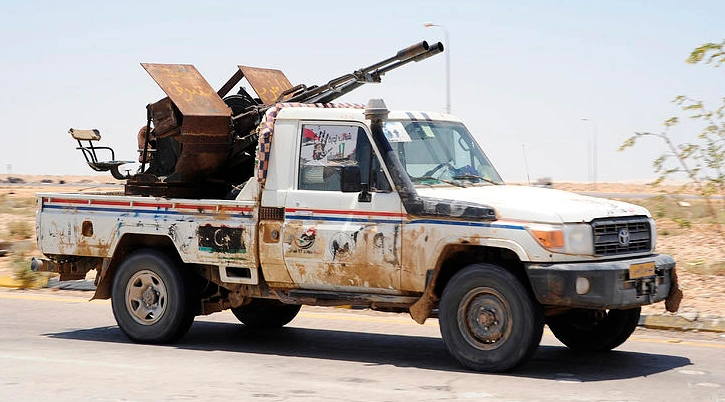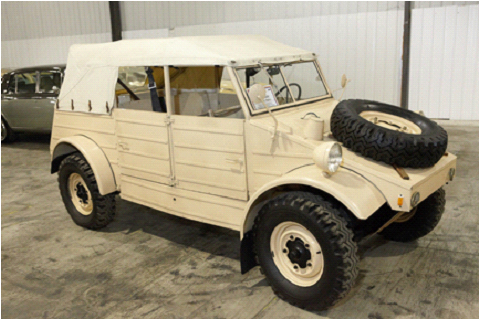I introduced this vehicle into my campaign after thinking about what sort of useful vehicle could be carried in a Scout Ship that would replace the air/raft.
It may seem counter-intuitive for a starship vehicle, but when you think about how often the scouts are out there on frequently low-tech worlds and may need to have an auxiliary vehicle that can be easily fixed with little more than hand tools and maybe local parts. Grav modules don't grow on trees and what if there isn't a power source to recharge them if the scout runs out of battery power far from the ship?
So I came up with this thing. It's cheap, clunky, and low-tech but works well in the context of what it is made for. In the words of Dudley Moore's character in "Crazy People", "It's boxy but good."
FAC-6 ATV (Scout Service) TL-9
Built for the Scout Service as a light scout car carried on colony protection and survey missions the FAC (Fast Attack Car)-6 is one of a wide range of such low tech exploration and combat vehicles. The hallmarks of the FAC series is low tech design for simple maintenance of even primitive worlds and compact size for ease of transport on even 100 ton Scoutships yet capable of carrying a full four-man crew (the usual number of crew on a Type S unless a singleship mission. The vehicle is modular in so far as the power plant is designed so that even a single person can easily swap out even a lower tech engine if required; the electric drives in the wheels only need a source of power regardless of the source type.
This model is 4 tons and can be carried in the same space as an Air/Raft, has 6 independently driven wheels that use an MHD Turbine for power. It carries a crew of two (driver and commander/gunner) and has jump seats in the rear compartment for two personnel.
Access to the vehicle is either through the rear ramp and compartment into the driver's seat in the front, or into the turret in the top middle. The driver and commander also have their own top hatches for direct access. The rear compartment has two jump seats, cargo capacity for all four crew's equipment and supplies, and the turbine unit housed in the roof above. The rear compartment has a bulkhead with a hatch separating it from the mid to forward section.
Fuel for a 200km range is stored in cells on either side of the rear compartment outside the armor protecting the interior areas. Up to three modular fuel tanks can be fitted to the rear exterior for another 100km range each.
The vehicle commonly has a single person turret that can be equipped with a wide array of equipment including weapons or scientific/observation gear. The service usually leaves the crews of ships carrying these vehicles a wide degree of discretion when outfitting the turret for the expected mission at hand. The turret and driver's position have thermal imaging vision and map box datalinks with the communications suite (500km range comms). The "average" FAC-6 will have plenty of sensor gear and recording instruments in the turret along with a light weapon, such as a laser rifle or light machine gun.
The FAC series relies on speed and their small size for survivability under fire and are lightly armored with composite materials. The interior has an overpressure system for use in hazardous atmospheres and radiation, but the rear compartment can be used as a sort of single-person air lock in such cases to prevent internal contamination when the crew exit.
Size: 4 tons
Speeds: 120kph on roads
80kph X-Country
Range: 200 km base range
(3 exterior bolt-on fuel modules add 100 km each for potential total of 500km.)
Armor: Equivalent to Combat Armor (CT rules)
The turret has a half cubic meter for equipment to be added by the user, and a pintel mount for a weapon if the user has filled up the available space. Otherwise a weapon or two can be added to the .5 cubic meter volume.
The turret is very low profile, about .5 meters high, so overhead clearance on even a Type-S Scout is not a problem. The power pack can easily be replaced with one from an air/raft if a rechargeable source is desired - which gives an idea of the requirements for the vehicle's wheel motors. The exterior fuel modules each take up about as much space a 5-gallon jerry can to give an idea of how much volume is available for cargo to be strapped on the vehicle if the fuel cells are removed. If an air/raft power pack is used then the cells can be swapped out for three extra battery packs to extend the vehicle's endurance by 24 hours each.
The FAC-6 has tow hooks on the front and rear, and a 2 ton winch on the front along with two spot lights the driver or commander can operate and aim from inside the vehicle.
It may seem counter-intuitive for a starship vehicle, but when you think about how often the scouts are out there on frequently low-tech worlds and may need to have an auxiliary vehicle that can be easily fixed with little more than hand tools and maybe local parts. Grav modules don't grow on trees and what if there isn't a power source to recharge them if the scout runs out of battery power far from the ship?
So I came up with this thing. It's cheap, clunky, and low-tech but works well in the context of what it is made for. In the words of Dudley Moore's character in "Crazy People", "It's boxy but good."
FAC-6 ATV (Scout Service) TL-9
Built for the Scout Service as a light scout car carried on colony protection and survey missions the FAC (Fast Attack Car)-6 is one of a wide range of such low tech exploration and combat vehicles. The hallmarks of the FAC series is low tech design for simple maintenance of even primitive worlds and compact size for ease of transport on even 100 ton Scoutships yet capable of carrying a full four-man crew (the usual number of crew on a Type S unless a singleship mission. The vehicle is modular in so far as the power plant is designed so that even a single person can easily swap out even a lower tech engine if required; the electric drives in the wheels only need a source of power regardless of the source type.
This model is 4 tons and can be carried in the same space as an Air/Raft, has 6 independently driven wheels that use an MHD Turbine for power. It carries a crew of two (driver and commander/gunner) and has jump seats in the rear compartment for two personnel.
Access to the vehicle is either through the rear ramp and compartment into the driver's seat in the front, or into the turret in the top middle. The driver and commander also have their own top hatches for direct access. The rear compartment has two jump seats, cargo capacity for all four crew's equipment and supplies, and the turbine unit housed in the roof above. The rear compartment has a bulkhead with a hatch separating it from the mid to forward section.
Fuel for a 200km range is stored in cells on either side of the rear compartment outside the armor protecting the interior areas. Up to three modular fuel tanks can be fitted to the rear exterior for another 100km range each.
The vehicle commonly has a single person turret that can be equipped with a wide array of equipment including weapons or scientific/observation gear. The service usually leaves the crews of ships carrying these vehicles a wide degree of discretion when outfitting the turret for the expected mission at hand. The turret and driver's position have thermal imaging vision and map box datalinks with the communications suite (500km range comms). The "average" FAC-6 will have plenty of sensor gear and recording instruments in the turret along with a light weapon, such as a laser rifle or light machine gun.
The FAC series relies on speed and their small size for survivability under fire and are lightly armored with composite materials. The interior has an overpressure system for use in hazardous atmospheres and radiation, but the rear compartment can be used as a sort of single-person air lock in such cases to prevent internal contamination when the crew exit.
Size: 4 tons
Speeds: 120kph on roads
80kph X-Country
Range: 200 km base range
(3 exterior bolt-on fuel modules add 100 km each for potential total of 500km.)
Armor: Equivalent to Combat Armor (CT rules)
The turret has a half cubic meter for equipment to be added by the user, and a pintel mount for a weapon if the user has filled up the available space. Otherwise a weapon or two can be added to the .5 cubic meter volume.
The turret is very low profile, about .5 meters high, so overhead clearance on even a Type-S Scout is not a problem. The power pack can easily be replaced with one from an air/raft if a rechargeable source is desired - which gives an idea of the requirements for the vehicle's wheel motors. The exterior fuel modules each take up about as much space a 5-gallon jerry can to give an idea of how much volume is available for cargo to be strapped on the vehicle if the fuel cells are removed. If an air/raft power pack is used then the cells can be swapped out for three extra battery packs to extend the vehicle's endurance by 24 hours each.
The FAC-6 has tow hooks on the front and rear, and a 2 ton winch on the front along with two spot lights the driver or commander can operate and aim from inside the vehicle.



/cdn.vox-cdn.com/uploads/chorus_image/image/60744365/DSC_6079.0.jpg)



